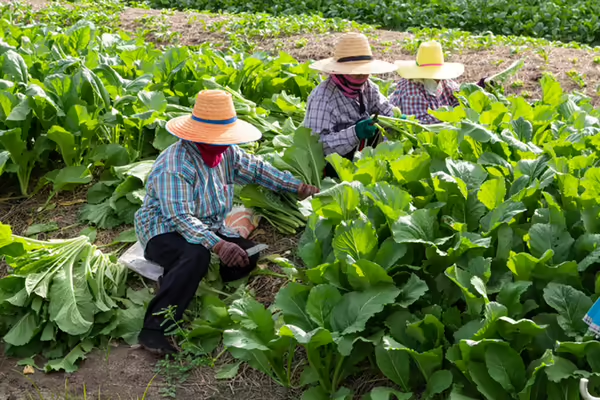
URBANA, Ill. — Another round of excessive heat is on the way through much of the United States next week, with heat indices predicted to reach 110 degrees Fahrenheit or more in many locations.
Salah Issa, an expert in farm safety, weighs in with advice for those working outdoors. Issa is an assistant professor in the Department of Agricultural and Biological Engineering, part of the College of Agricultural, Consumer and Environmental Sciences and The Grainger College of Engineering at the University of Illinois Urbana-Champaign.
What are the risks to outdoor workers in extreme heat?
Salah Issa: Outdoor workers, especially farmworkers, face significant risks due to:
- Prolonged exposure to high temperatures
- Strenuous physical labor
- Limited access to shade, water, and rest
- Piece-rate pay systems for many farmworkers discourage breaks
- Lack of federal OSHA heat standards, though some states have them
Based on research studies, the core body temperature increases nearly 0.5 degrees for every 1% of body mass lost from dehydration during intense physical activity in the heat. As one becomes dehydrated, workers sweat and lose plasma volume and electrolytes.
These conditions can lead to a spectrum of heat-related illnesses (HRI), including heat rash, heat cramps, heat syncope (fainting), heat exhaustion, and heat stroke, which is life-threatening.
Learn what signs to watch for and steps outdoor workers and employers do to decrease the risk.
Read the full article from the College of ACES.
University of Illinois Extension develops educational programs, extends knowledge, and builds partnerships to support people, communities, and their environments as part of the state's land-grant institution. Extension serves as the leading public outreach effort for University of Illinois Urbana-Champaign and the College of Agricultural, Consumer and Environmental Sciences in all 102 Illinois counties through a network of 27 multi-county units and over 700 staff statewide. Extension’s mission is responsive to eight strategic priorities — community, economy, environment, food and agriculture, health, partnerships, technology and discovery, and workforce excellence — that are served through six program areas — 4-H youth development, agriculture and agribusiness, community and economic development, family and consumer science, integrated health disparities, and natural resources, environment, and energy.